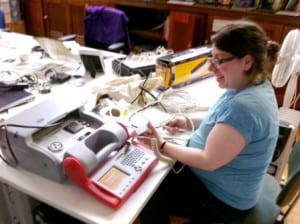Specimen of the Week 373: Coal worker’s pneumoconiosis
By Subhadra Das, on 11 January 2019
Today’s specimen of the week comes from UCL Pathology Collections. The Collections are displayed at the UCL Pathology Museum at the Royal Free Campus of the UCL Medical School in Hampstead. The museum includes a medical teaching collection of nearly 3,000 specimens of human remains illustrating the history of disease. To open up these specialist medical displays to a wider audience, we’ve developed a trail of 10 specimens of well known diseases. As the museum only opens to the public for special events, we’re sharing the trail as part of the Specimen of the Week series.
All of the entries for the UCL Pathology Collections Top 10 Medical Trail have been written by Nazli Pulatmen, who worked with us for her MA Museum Studies placement in the summer of 2018.
This week’s specimen is a lung belonging to a person who worked in soft coal mines in Wales for almost 50 years and died aged 62 from haemoptysis – coughing up blood in laymen’s terms.
 Close
Close



